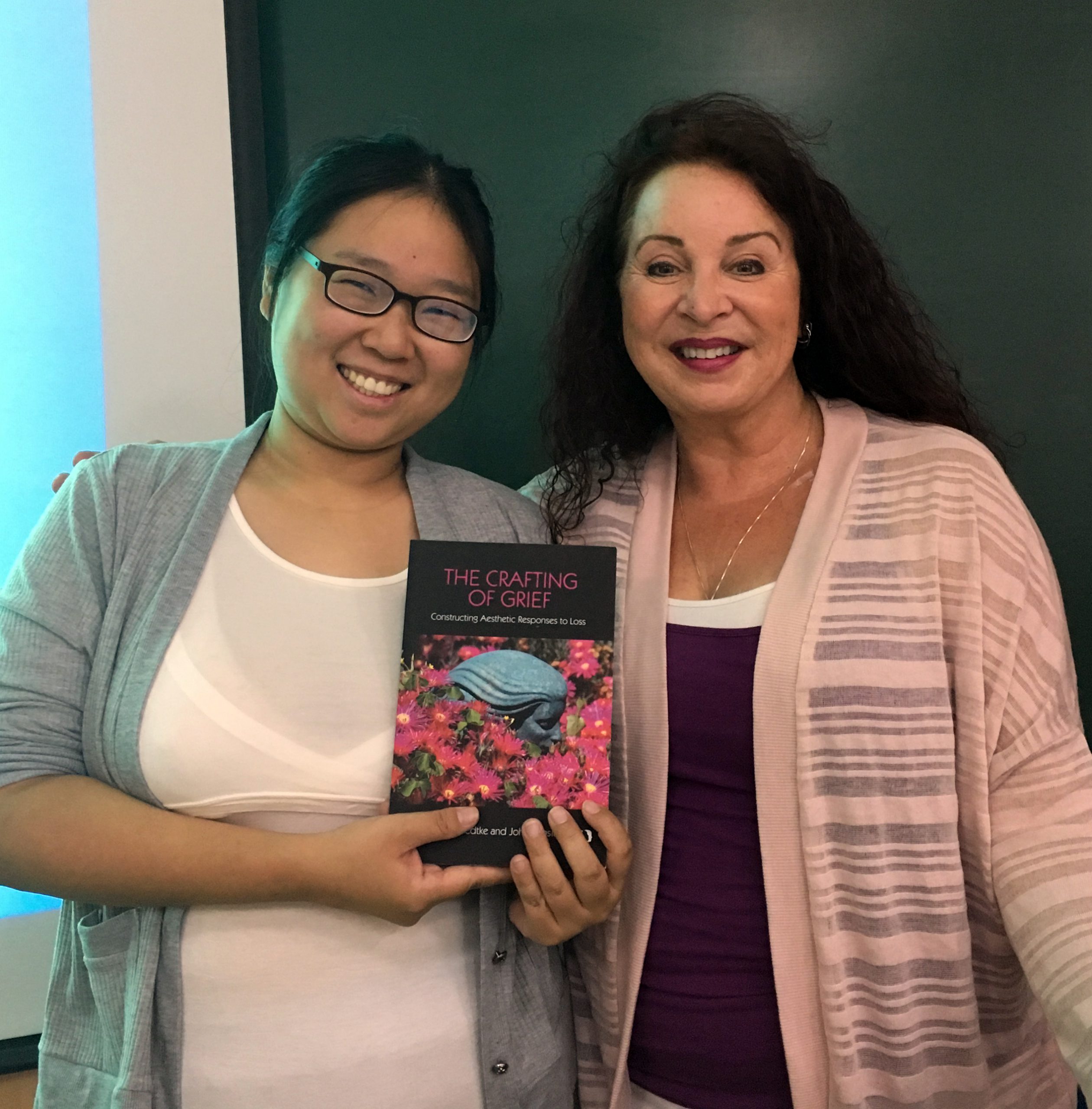
Re-membered lives are moral documents and their function is salvific, inevitably implying, ‘All this has not been for nothing’.
Barbara Myerhoff, 1982, p. 111
Stories we tell about ourselves and those held by others form a powerful polymer that gives life purpose. The stories form what we hold dear, how we take up causes, the values that inspires us. They also create the places of pain and challenge where we struggle in life. Story is the overarching currency that shapes everything that informs our experiences.
This is true for how we come to think about death and whatever we believe about what happens in the moments, weeks and years, after the physical events of death. Story shapes our responses and can act like a bridge between the living and the dead. Story takes on almost a spiritual quality that transcends death, whether we believe in an afterlife or not. Story is always here, comforting and walking alongside us when death, and grief, are present.
The following is an example of a family whose shared story about afterlife comforted as they faced a major life change*. The story became the explicit focal point to form meaning around where they could return again and again, growing the details and finding a sense of hope.
When I met with Sebastian for the first time, we planted seeds with his family about his hopes for their remembering of him. He had delightful ideas about how he envisaged his life continuing to be important to them following his death. With his wife, two children, his grandson and two-month-old great-granddaughter, we spoke about his life. From his hospital bed, Sebastian shared how music had been so important to him and his family. He had been a music teacher and composer and each of his children also had a musical proclivity. They mentioned, almost in passing, that he was hoping to write music for the heavenly choir. I asked him about this.
“Was being in the choir an avocation that he would enjoy?”
“Yes,” he said, “but I do not want to be just in the choir, but in charge of it!” All agreed that Sebastian preferred to run shows.
“He has written such wonderful music for so long that his friends know what a good musician he is. Many people are asking him to save a seat for them in the heavenly choir,” his wife said.
His children spoke about how their father’s musical abilities had inspired them as Sebastian listened.
“What kind of music would you like to bring to the heavenly choir?” I asked.
Sebastian laughed, “Hopefully, the kind of music that makes you want to be there.”
“Do you think the kind of music that you will create would be the kind that people might flock to?”
“Yes, I hope so. I would want people to use it to find their way to heaven.”
I asked, “Would this be like a calling card? A card that is calling them over to heaven?”
“Yes. I will make the music so they can find the way.”
Later, when speaking privately with Sebastian’s children, I learned that their father was the first person they had known who was about to die. All their grandparents had died long before they were born. And even though they were in their forties they had had little death in their lives. They did not know what it would be like to witness death and experience grief. Again, we spoke about their father’s role with the heavenly choir. I wondered if they thought this was a fitting place for him. Did they think there was anything important about their father being the first to die in their family?
They spoke about how he had been their teacher throughout life and he was once again lighting the way for them. Their spiritual beliefs had always been a source of strength for them and they all shared a belief that afterlife meant heaven, in a Christian sense of the word. So for them to think of their father as in charge of the heavenly choir was apt.
“Some day, when it comes time for you too to die, what do you think it will be like to hear your father’s music again?” I asked. They liked the idea that he would welcome them back together after their deaths to sing as a family once more. They agreed that this was a reassuring thought. “It is comforting to know where my father will be, if I need him,” his daughter said. “I like knowing that he will be content creating music and that it will be his music that will sing me over when my time comes to die.”
Story bridges the spaces between life and death, making the distance smaller. We can ponder the ways in which we continue to access to our loved ones’ stories, what we tell about them, where we recall their presence in our lives. We can wonder if sending messages to our loved ones can be posthumously received and if we can hear messages back from them, and if so in what forms. These are a but a few of the many ways in which story can be the portal into a relationship connection that transcends death.
*Portions of this excerpt previously appeared in the book Re-membering Conversations with the Living and the Dead.
Hedtke, L., & Winslade, J. (2004). Re-membering lives: Conversations with the dying and the bereaved. Amityville, NY: Baywood.
Myerhoff, B. (1982). Life history among the elderly: Performance, visibility and remembering. In J. Ruby (Ed.), A crack in the mirror: reflexive perspectives in anthropology (pp. 99-117). Philadelphia, PA: University of Pennsylvania Press.
